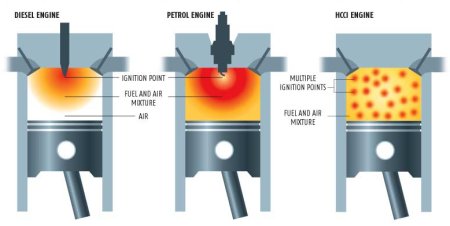 All Entries Tagged With: "engine technology"
All Entries Tagged With: "engine technology"
Why Don’t Diesel Engines Sell in The USA?
Diesel engines are superior to gas engines in a few critical ways:
- Diesel engines are more efficient due to the thermodynamic benefits of their higher compression ratios
- They’re much more durable – diesel engines commonly run 2-3 times longer than a comparable gas engine
- They put out more torque for any given RPM than a similarly sized gas engine, meaning that a tiny little diesel engine can power a small car very efficiently (Ford’s euro-spec Fiesta diesel gets 60+ mpg with a 1.6L motor)
Point #1 and #3 are very important, as they are the main reasons that diesels are so popular around the world. In Europe, for example, about 50% of the vehicles (be they tiny little commuter cars or big trucks) are powered by diesel. Considering that the average cost of fuel in most Western European countries ranges between $6-8 per gallon (1.27-1.72 euros per liter), the fuel economy benefits of diesel engines make them a very popular option.
Yet in the United States, diesel vehicles are barely 5% of the market. Why? What is it about diesels that people in the USA dislike?
The answer? Emissions rules, the “carbon penalty,” and a myriad of other smaller issues keeps diesels from selling. What follows is an attempt to explain – comprehensively – why diesels don’t (and probably won’t ever) sell at any substantial volumes in the USA.
Search terms people used to find this page:
- tundraheadquarters
Emerging Engine Technology – HCCI – What is it?
Engineers started fiddling around with HCCI (Homogeneous Charge Compression Ignition) in the late 1970s. While the possibilities that HCCI offered were intriguing (especially the fuel economy savings), the technology was too complicated for the time. HCCI research was relegated to the back shelf – until recently when the search for more efficient, eco-friendly gas-sipping engines became priority number one for the auto industry.
HCCI could very well be, if not THE answer to our gas price and oil consumption woes, at least a serious transition from current technology to some sort of future non-fossil fuel engine. What it is requires a little more explanation, and that explanation starts with what HCCI isn’t.

HCCI graphic from New Science magazine 2006.
With conventional gas engines, ignition of the fuel/air mixture is achieved with a spark.
The Tundra’s Acoustically Controlled Induction System
Like the rose, a variable length intake manifold by any other name would still increase horsepower and torque. Toyota’s name for this technological rose, and the system used in all three Tundra engine options, is Acoustically Controlled Induction System. In the simplest terms, the ACIS supplies a blast of air, like a tiny supercharger, into the combustion chamber under specific driving conditions. How sweet.

Here’s a cutaway of the 5.7 V8. Note the tag for ACIS in the upper right hand corner.

